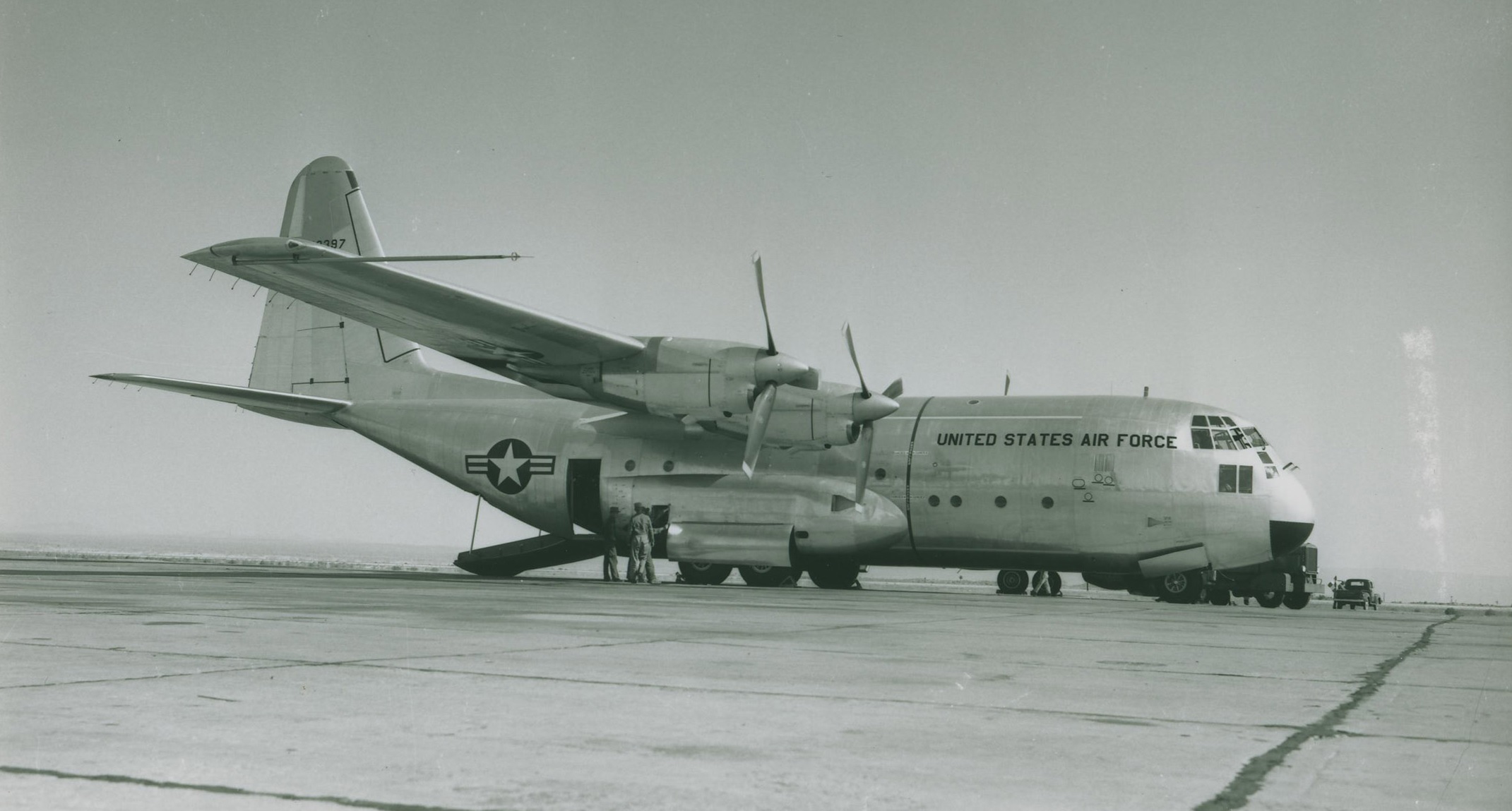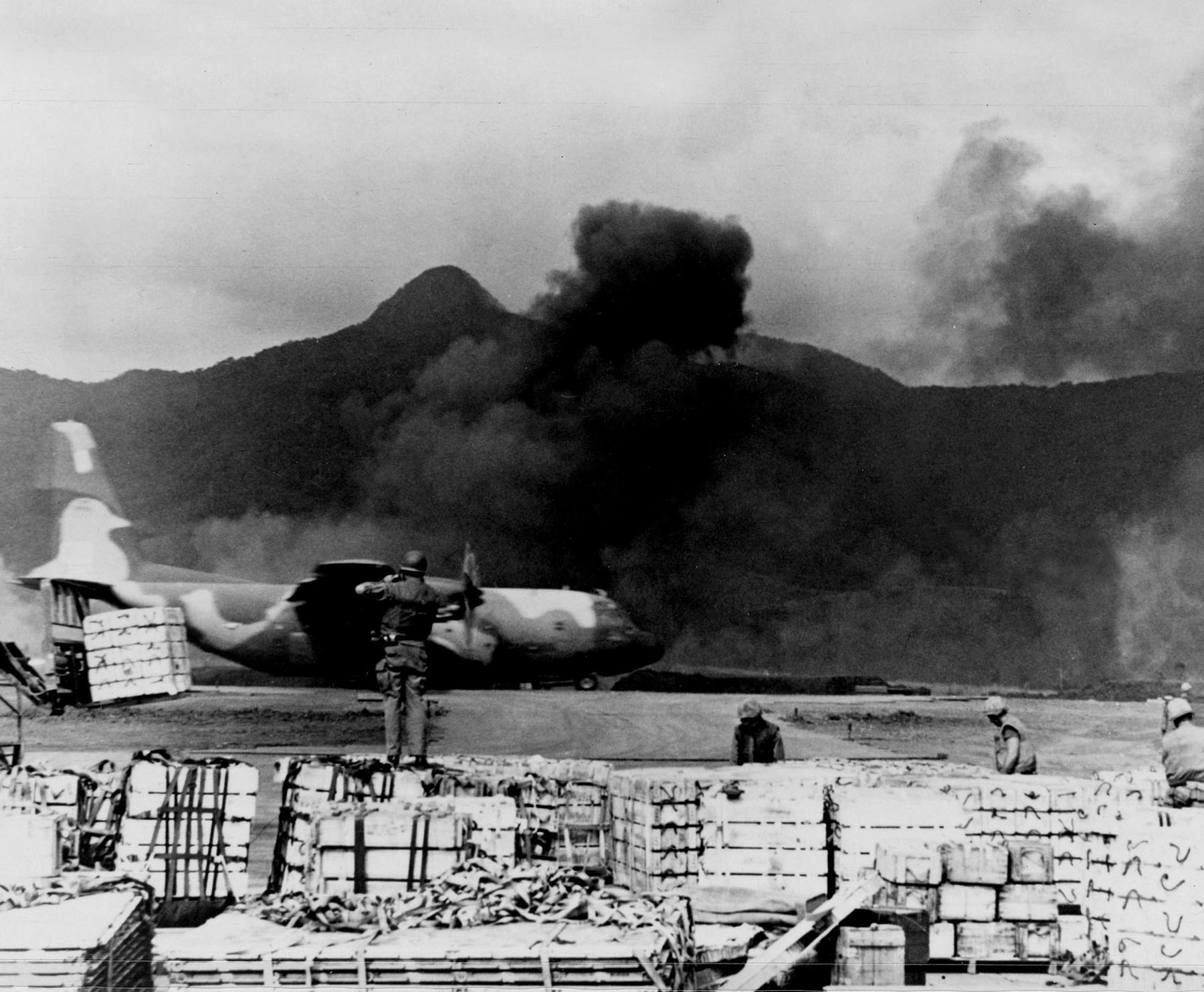C-130 Hercules: 70 years strong, the indispensable workhorse of military airlift
On August 23, 1954, a new chapter in aviation history was written with the first flight of the versatile C-130 Hercules. Seventy years later, this giant of the skies remains indispensable to numerous air forces around the world.
The origin of the legend
The C-130 was a milestone in aeronautical engineering, conceived to replace the USAF’s obsolete transport fleet designed during World War II. At the time, U.S. tactical airlift was based on the Fairchild C-119B Flying Boxcar and C-123 Provider, both powered by twin-piston engines, and on WWII veterans such as the C-47 and C-54. The Korean War highlighted the limitations of these airframes, prompting the Air Force to look for a new, more efficient and versatile model.
In a document of just 7 pages, the USAF set stringent requirements for the new aircraft:
- Capability to deploy 92 combat-equipped soldiers or 64 paratroopers at a range of 2,000 kilometers.
- Transport 15,000 kilograms over a distance of 1,780 kilometers.
- Ability to fly at 125 knots (230 km/h) or less for paratrooper or cargo drops.
- Equipped with a rear loading ramp for vehicle loading and unloading without specialized airport equipment.
- The ramp could be opened in flight for heavy cargo drops and, along with a pair of side doors, for rapid deployment of paratroopers.
- Capable of transporting heavy equipment such as tractors, artillery pieces, and trucks.
- Able to operate from unprepared coastal and inland dirt, clay, or sand runways.
- Safe flight with one engine inoperative.

Chief designer Willis Hawkins and his team managed to shape these requirements in just 3 months. As Hawkins himself would later recount in an interview:
“We basically took the dimensions of the largest piece of equipment the Air Force had specified, drew a circle around its cross-section, and turned it into a tube the length of a railroad car. We put wings on it, a nose, and a tail, and we had the design,” Hawkins added. “We put the aircraft close to the ground so we could use the ramp to load and unload cargo easily.”
When the USAF saw Lockheed’s proposal, they knew they had found the aircraft they needed. After an intense selection process, the C-130 emerged as the winner. On July 11, 1951, a formal contract was signed for the production of two prototypes, designated YC-130.

The name ‘Hercules’ was chosen through a company-wide contest. The reference to the Greco-Roman mythological figure renowned for his strength and the completion of the Twelve Labors, considered impossible feats for any mortal, captivated the judges. The winning employee was awarded a prize of $1,000 (equivalent to approximately $11,800 today) and a week’s vacation.
First flight, the first of many
On a hot August day in 1954, at the Lockheed Corporation facilities in Burbank, California, an aircraft was poised to take off that would forever change military transport aviation. The prototype YC-130A, with its simple yet innovative design and four powerful Allison turboprop engines, was ready for its maiden flight.
Aboard, a team of experienced test pilots, led by Stan Beltz and Roy Wimmer, prepared for this historic mission. After final checks and adjustments, the engines roared to life, and the C-130 lifted off the ground for the first time.
Initial impressions were promising. The YC-130 demonstrated surprising stability and maneuverability, exceeding the designers’ expectations. During the 61-minute flight, the aircraft was flown from Burbank to the nearby Edwards AFB Air Force Flight Test Station.
The first operational C-130A was delivered to the United States Air Force on December 9, 1956, marking the beginning of a production run of 219 aircraft. This was just the start of a long and successful production history, with numerous domestic and international orders solidifying the C-130’s position as the industry standard.
Throughout its decades of service, the C-130 Hercules has proven to be highly adaptable, continuously evolving to meet the changing needs of its operators.
And the story goes on and on
Seven decades after its first flight, the C-130 Hercules remains a mainstay in numerous air forces around the world. Conceived for the challenges of the mid-20th century, its design demonstrated amazing adaptability, evolving to meet the demands of the 21st century.
From humanitarian missions to the most diverse high-intensity military operations, such as in the Vietnam War, the C-130 demonstrated unmatched versatility, flying to all corners of the globe.

More than an aircraft, the Hercules is a symbol of engineering and innovation, a testament to the fact that great designs transcend eras. Its continuous production, the longest of any military aircraft, is a reflection of its relevance and its enduring legacy. The story of the C-130 continues to be written, and each of us, aviation enthusiasts, are a part of it.

/https://aviacionlinecdn.eleco.com.ar/media/2020/12/YC-130-Hercules-3.jpg)
Para comentar, debés estar registradoPor favor, iniciá sesión